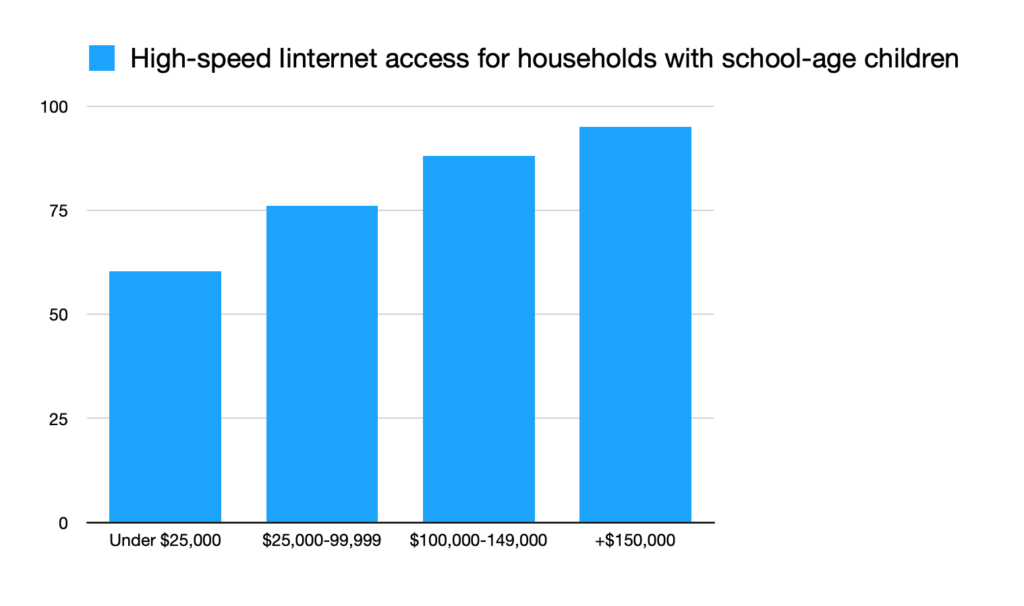The pandemic and related requirements that students learn from home have brought to my attention issues I thought we had moved past. My reference here is to data I have read locally (Minneapolis ara) about the numbers of students unable to participate in online efforts because of the lack of access. Schools had recognized this issue and made mobile hot spots available to families in need so students could meet homework assignments, but the more general expectations that are now in place revealed more need than schools could meet.
We have written a textbook since the middle 1990s and have included comments about equity. Looking at the history of our coverage, I can see a timeline of what we used as “marker variables”. In the early days, the marker was easily quantifiable and was reflected in the student to computer ratio. So, we would compare schools with a high proportion of students qualifying for free and reduced lunch with schools with few students needing this assistance. You would see values like 10:1 and 5:1. What would seem to happen was that the government would recognize such disparities and step in with subsidies such as the e-rate. The next marker was again quantitative and might be the proportion of school computers with Internet access. Soon, most schools were wired and we started to talk about issues such as 1:1 initiatives and more qualitative indicators such as the type of classroom tasks students participated in and the staff available to support educators.
The next disparity involved assumptions about whether homework could require Internet access and the proportion of families with high-speed access by income level or some other variable. I thought we had kind of moved beyond the quantitative differences to focus on the kinds of free-time home activities students focused on or the types of home devices (phone, tablet, computer) relative to equity variables.
My surprise was that the pandemic seemed to indicate I had to back up along my assumed timeline with families claiming that children could not connect to complete assignments. PEW provides some data relevant to this issue. A chart based on these data appears below and PEW also writes that 25% of children in homes with less than 30K in income do not have access to a computer.

![]()